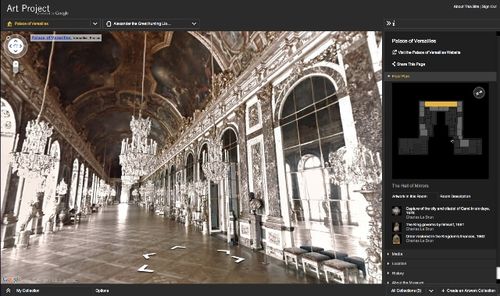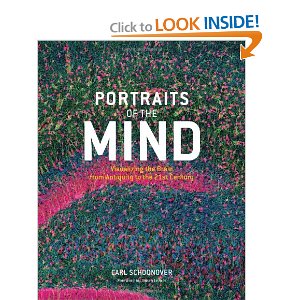
Robert Motherwell in 1970 (Associated Press)
THE WALL STREET JOURNAL
March 23, 2011
Behind the Veil: Questions About Art Authentication
by James Panero
Shedding light on the closed world of artist foundations and the largely unregulated authority they have come to command.
On Feb. 1, Ireland-based Killala Fine Art Ltd. filed a lawsuit in the U.S. District Court for the Southern District of New York against The Dedalus Foundation. The New York-based private foundation, according to its website, is dedicated to preserving the artistic legacy of the Abstract Expressionist Robert Motherwell (1915-1991) while fostering the "public understanding of modern art and modernism." Dedalus subsidizes its operations, in part, from the sale of Motherwell works that it owns and from revenue earned from its control of the copyright on all of the artist's works in reproduction. In 2009, according to the latest publicly available tax returns, Dedalus generated more than $2.4 million from the sale of more than 100 Motherwell paintings, drawings and prints.
The suit claims that Dedalus made "false assurances" about the authenticity of "Spanish Elegy" (1953), a painting thought to be from Motherwell's signature series about the Spanish Civil War. A call to the Dedalus Foundation was returned by a lawyer, Peter R. Stern, who says that "there is absolutely no merit to [Killala's] claim" and that Dedalus "intends to make a motion to dismiss the complaint in its entirety." Marc Blondeau, an operator of Killala, did not return multiple requests for comment left at his offices in Geneva, but court records outline Killala's claims.
The lawsuit is not the first time that Dedalus, established in 1981 by Motherwell and now operated by art professionals and former Motherwell associates, has been challenged in court over its authentication practices. In court documents, Joan Banach, a former employee who has been in active litigation with the foundation since 2009—citing wrongful dismissal and gender discrimination—similarly questions the way Dedalus has been evaluating Motherwell works. Regardless of their legal outcomes, the two cases shed light on the closed world of artist foundations and the largely unregulated authority they have come to command in the world of art authentication and, by extension, the art market.
In 2007, Killala purchased "Spanish Elegy" from Julian Weissman, a New York-based dealer also named as a defendant in the suit, for $650,000. Killala claims it bought the painting believing it to be an authentic Motherwell. (A call placed to Julian Weissman Fine Art LLC in New York was answered by a representative who said the dealer was "unavailable for comment.") Killala claims in its court filing that prior to the sale, and as a prerequisite, Mr. Weissman asked Dedalus to authenticate the work. According to the lawsuit, in late January 2007 Jack Flam and Morgan Spangle, both employees of the foundation and members of the foundation's board of directors, examined the painting at the Weissman gallery.
In addition to serving as Dedalus's board president, Mr. Flam is the director of the foundation's continuing catalogue raisonné project, which Dedalus describes as a "systematic and comprehensive scholarly reference text in which each work known to have been executed by a particular artist is illustrated, thoroughly documented and described." The foundation outlines one of its main purposes as the establishment of "a reliable corpus of authentic works." A catalogue raisonné is a primary reference tool for scholars, art dealers and auction houses, and so plays a critical role in the market fortunes of a work of art. Inclusion in it assures buyer and seller that the work is authentic; exclusion renders the work suspect.
Soon after examining "Spanish Elegy," Dedalus sent a letter to Mr. Weissman stating that "The Dedalus Foundation, Inc. (the "Foundation") has caused the above-described Work to be examined by its representatives. It is the opinion of the Foundation that the Work is the work of Robert Motherwell." A copy of the letter is included as an exhibit to the lawsuit.
Mr. Spangle sent his own letter to Mr. Weissman. A former gallerist who joined the Dedalus board after Motherwell's death while his father-in-law, Richard Rubin, was the foundation's president, Mr. Spangle now serves as its executive director. On Feb. 15, 2007, he wrote to Mr. Weissman: "Here is the letter of authenticity which is issued by the Foundation. While it does not say directly that the painting, Spanish Elegy, 1953, will be included in the catalogue raisonné which is being prepared by the Foundation, I can assure you that the painting will be included." (This letter is also an exhibit to the lawsuit, with emphasis in the original.)
The lawsuit states that based on these assurances, Killala purchased the painting from Mr. Weissman. But two years after the sale, Dedalus "suddenly retracted its earlier representation and raised doubts about the painting's authenticity." On Feb. 17, 2009, according to Killala's filing, Dedalus sent a letter to Mr. Weissman stating that "based on new information," the project "has determined to withdraw" its letter of authenticity. In the same letter, Dedalus informed Mr. Weissman that "at present we do not plan to include [the painting] in the Catalogue Raisonné."
The exclusion, Killala writes in its lawsuit, means that "the art market will harbor very serious doubts about its authenticity. The work will lose all commercial value, and become unsaleable in the trade." In the case of its "Spanish Elegy," Killala now says, Dedalus made "false statements" in promising to include the work, since it "is in fact not an authentic Motherwell."
Killala is now seeking, among other claims, compensatory damages from Dedalus and the return of the purchase price from Mr. Weissman. "The Dedalus Foundation is not a for-profit entity," says Mr. Stern in response to the suit. "It is creating a catalogue raisonné as a public service to the art community. When it renders an opinion, it is an opinion, not a statement of fact. And in rendering an opinion, the foundation reserves the right to change its mind, as does every other catalogue raisonné in existence. . . . If anyone has liability to Killala, it is Mr. Weissman" as the seller of the work.
At no time did Dedalus offer any explanations, Killala claims, either of why it originally accepted the Motherwell as authentic, or what made it change its mind, or why it took two years to do so. Nor did it ever disclose how it arrived at its judgments, a claim Mr. Stern disputes in this particular case. Still, in general, this is the way many artist foundations work, a point with which Mr. Stern concurs: "As is the case with most catalogues raisonnés, the authors decline to give reasons to their decisions. It's standard."
Foundations might fear litigation, or risk tipping off forgers on what their evaluators are looking for, if they were more forthcoming in their deliberations. Yet such silence also gives artist foundations complete authority with little accountability.
'It's not that the process has to be open, but the results and methods do need to be made public," says the art historian E.A. Carmean. "That's the very definition of a catalogue raisonné—it's a reasoned catalog. With some exceptions, the modern catalogue raisonné is published without a discussion of the inclusion or exclusion of contending objects. The product should reveal the ways the decisions are reached."
This lack of transparency is all the more troubling in the case of Dedalus, since another lawsuit also suggests that the authentication process may be flawed.
When Dedalus first began its catalogue raisonné project in 2001, it employed an outside art historian, Joachim Pissarro, to serve as its director, with a committee of advisers set up to work alongside him. In 2006 Mr. Pissarro left the project and Mr. Flam, Dedalus's president, took over.
In court papers for her gender-discrimination and wrongful-termination lawsuit against Dedalus, Ms. Banach alleges that as director of the catalogue raisonné project, Mr. Flam made "repeated misjudgments about the authenticity of works attributed to Motherwell." She says she was "compelled to challenge these errors to protect the integrity of the artist's legacy" and alleges in court papers that this is why she was fired.
Ms. Banach further alleges in her complaint that Mr. Flam "flouted established procedure" in authenticating and then deauthenticating work himself, without consulting the other members of the committee. In particular, Ms. Banach says that Mr. Flam made his own determinations about two of Motherwell's "Spanish Elegy" paintings, which she claims he subsequently reversed. She also says that Mr. Flam authenticated a work on paper that Mr. Motherwell had himself claimed was a forgery when presented with it in the 1980s. Alarmed by his mistakes, Ms. Banach claims in her complaint, the foundation's board took out a $2 million insurance policy "to cover the costs of a potential lawsuit." A work that fits the description of one of the Elegy series cited in Ms. Banach's claim now appears to be at the heart of the Killala suit.
"There is no connection between the two cases," says Mr. Stern. Lee F. Bantle, Ms. Banach's lawyer, disagrees. "The 'Spanish Elegy' purchased by Killala is one of the paintings identified by Banach in her suit," Mr. Bantle said by email. "There was a breakdown in the Dedalus authentication process which she challenged prior to her ouster."
Dedalus's response to Ms. Banach's lawsuit is to countersue for more than $5 million, claiming "breach of fiduciary duty, self dealing, theft of corporate opportunities, conversion, replevin, and spoliation of computer evidence." And it states in court papers that "Banach's apparent hope to turn this action into a forum to dispute or prove the authenticity of Motherwell works (or Dedalus's views thereon) is improper and impermissible."
It may be some time before these cases are settled, but much is already clear. Artist foundations have come to serve as the art market's rating agencies, with catalogues raisonnés providing triple-A stamps of approval. As such, these foundations regularly make determinations that can have a significant monetary impact on the value of art, as the Killala lawsuit maintains. At the same time, because these same foundations derive income from the sale of work in their possession by the same artist, there is the potential for conflict of interest, in fact or appearance, in their evaluations of works submitted for authentication.
The American Association of Museums (AAM) and the Association of Art Museum Directors (AAMD) both have best-practice guidelines and enforceable standards of conduct for museums. Not so artist foundations. Despite their considerable influence, artist foundations follow no industry standards, are allowed to operate in complete secrecy, and are accountable to no outside individual or entity beyond the attorney general and the Internal Revenue Service, with only the courts offering glimpses of their operations. Surely it is time that changed.
Mr. Panero is the managing editor of the New Criterion.

